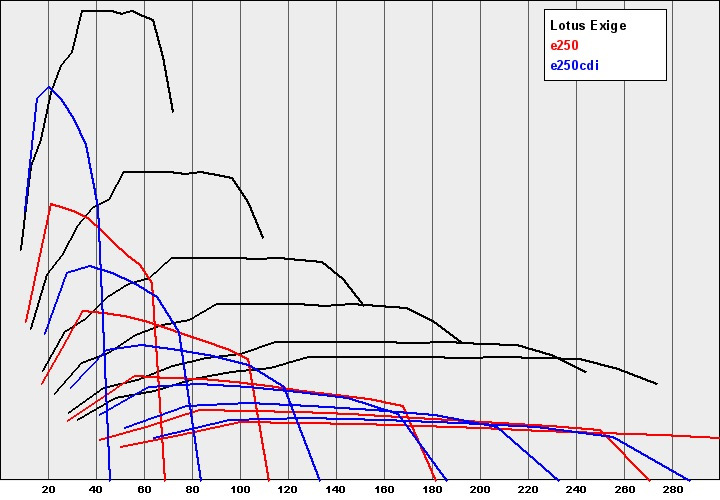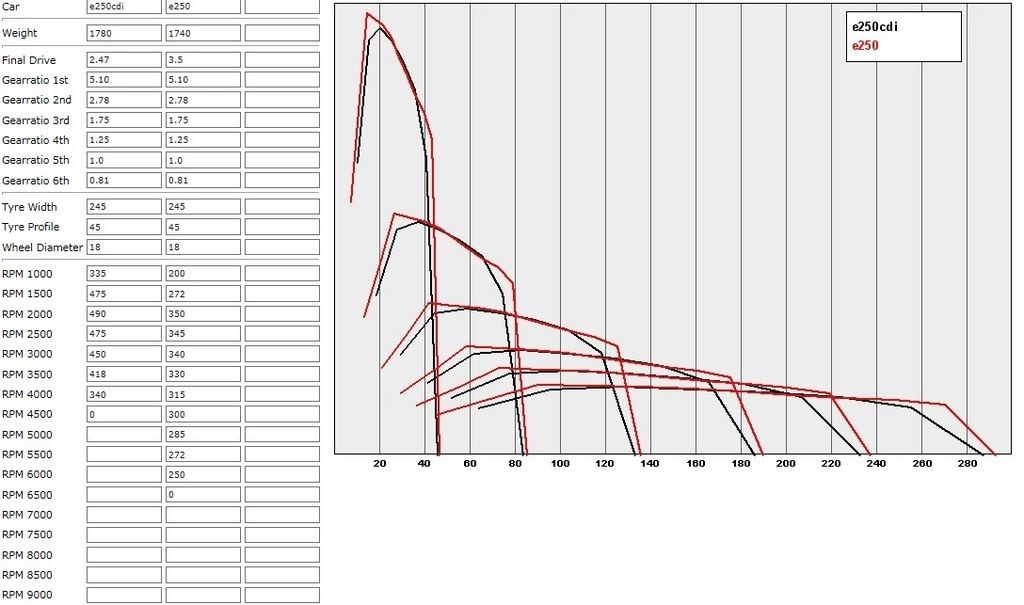Thanks! Yeah, traction limit is probably a big issue. But it's hard to quantify (different tyre compound or surface grip could offset how much force you can apply before the wheels spin). Even drag too. In reality, you would need to account for traction and at higher speed the drag coefficient that would lead to an overal reduction in force as you gain speed, but progressively more air resistance. I find the graph great though for comparing in-gear acceleration between different cars. It's easy to see where which car at which rev-range and gear would have an advantage or not.Stradivarius wrote:Interesting stuff! This is a great effort, and I hope you don't mind a couple of comments: At speeds below 45 km/h I would think that wheel spin/traction is likely to be the limiting factor of the car's acceleration, so the force advantage of the diesel engine in first gear isn't necessarily real, at least not until approaching 45 km/h. At 45 km/h, the engine is capable of an acceleration higher 0.6 g and I am not sure if the tires are capable of much more.
Yeah. What I ment with friction is what you just explained.Stradivarius wrote:By the way, you write that from 45 km/h to 70 km/h, the petrol car is quicker because the diesel car is already in 2nd gear. This is correct, but it has nothing to do with friction. As far as I can understand, your calculations don't even account for friction. The reason why the diesel has less force in 2nd gear is the simple fact that a higher gear (exchange ratio) is trading torque for rotational velocity. So even though the engine torque actually is higher right after shifting to 2nd gear compared to right before the gear shift, the torque on the wheels is smaller due to the gear exchange ratio. This is why I think it's more convenient to forget about the torque and instead consider the power. Then you directly see the exact reason why the force drops when shifting to a higher gear: The engine power drops because you move to an engine rpm range with less power. Additionally, the force always decreases as the speed increases due to the simple equation: Power = force x speed.
EDIT:
Just to add, if I add the Lotus Exige (sorry for me keep bringing up this car, but I already have the data for it, so it's convinient)

...it's easy to see it's in a completely different league performance wise. But what is even more interesting that if I decided to launch the car off the line in 3rd gear (lets assume a rolling start for arguments sake), I'd be slower then both Mercedes up until 70km/h when the petrol e250 reaches it's rev limit in 1st gear and goes into 2nd gear. It also shows that if I ever were to be in a drag race from say 40-100km/h and I was stuck in 5th gear, I'd lose out to both Mercedes going through the gears maximizing their potential.

